|
| *****SWAAG_ID***** | 1002 |
| Date Entered | 21/06/2017 |
| Updated on | 21/06/2017 |
| Recorded by | Tim Laurie |
| Category | Archaeological Random Find |
| Record Type | Archaeology |
| Location | Find site alleged to have been on Scargill High Moor |
| Civil Parish | Scargill |
| Brit. National Grid | |
| Geology | N/A |
| Record Name | The affinities and provenance of the Seaton or Scargill Amulet |
| Record Description | The Seaton Amulet is fully described in previous SWAAG Record 711 and reproduced again as Photo Image Nos 1-10 below.
The following extract from a short Note submitted by the Late Dennis Coggins who was then the Antiquities Officer at the Bowes Museum, appeared in the July Issue of Antiquity, 1982 under the heading: 'A Celtic amulet from Co. Durham.' This Note describes the circumstances of the finding of an unusually interesting stone object on Scargill High Moor in Spring 1981, as follows: 'In the Spring of 1981 Mr Ted Seaton, a metal detector enthusiast from Barnard Castle, brought to the Antiquities Department of the Bowes Museum a small object which he stated had been found exposed on an eroding ground surface on Scargill High Moor. The object was drawn and photographed before being returned to Mr Seaton. See Plate XV. It is a polished trapezoidal dark grey pebble 21mm high, 24mm wide at the base and 13mm thick. All corners are rounded. There is a biconical perforation near the apex. The base is flat and is engraved with a stylized human figure. The head of this figure is large, triangular in shape, and with all the features shown. Two horns curve upward and outward from the forehead. The torso is reduced to a single engraved line ending in a tripod or pendant. The arms extended and curving upward, have pendant fringes, while similar fringes surround the face. At the lower left hand corner of the base is engraved an eight point star. Though the engraving is crude it is assured and the figure imposing and dignified. No exact parallel for the object has so far been forthcoming though parallels for most of the individual features can be found and the affinities seem to lie with Celtic religious art.' For a more complete image of the Scargill Amulet, see the figured drawings within extracts from Stonehenge Viewpoint, Issue 50 also attached.
|
| Dimensions | See photo and as above |
| Additional Notes | In consequence of the article and published details of the 'Celtic Amulet', Scargill became subject to pilgrimage by numbers of New Age Believers in Mysterious Britain. This was much to the dismay of the Game Keepers on Scargill Moor. The amulet was the lead story in 'Stonehenge Viewpoint' Issue 50 which is a periodical publication devoted to an alternative view on 'Archaeology, Astronomy, Geology and related Arts and Sciences.' The preferred publication of New Age Believers.
To my knowledge, Ted Seaton's local geography was rather suspect. He took me to a very different location which he stated to be the find site. This location was in scree at the base of a low cliff on the east side of the Stang road! We did find a number of unrelated small metal objects in the scree which may have been thrown there recently. This rubbish was similar to the bulk of metalwork found by metal detectorists.
I have discussed the provenance and affinities several times with the Late Percival Turnbull. Percival had worked as an archaeologist in the Middle East and, on stylistic grounds Percival was of the firm view that the amulet was of Middle Eastern provenance and neither 'Celtic' or British in origin.
At this time, very many oil workers were returning home with archaeological objects collected from the Middle East.
I, in turn, having experienced Ted Seaton's keen interest in establishing an address for his various finds was very doubtful of the attribution of this find to 'Scargill High Moor'.
This stone object which is variously known as the Scargill or Seaton Amulet was the subject of further very detailed discussion and speculative interpretation within 'Stonehenge Viewpoint' Issue 50 which is a periodical publication devoted to an alternative view on 'Archaeology, Astronomy, Geology and related Arts and Sciences.' In consequence of this Publication- which reaches a very wide and extensive readership- Scargill was subject to a'pilgrimage' of those with an interest in the science of the occult and with very different views on mainstream archaeological theory. Dennis Coggins told me that this small invasion by persons of a hippy appearance, of an otherwise mainly deserted grouse moor, well in advance of open access, was not really appreciated by the Game Keepers |
| Image 1 ID | 4316 Click image to enlarge |
| Image 1 Description | The Scargill Amulet. Antiquity, July Issue. 1982 Plate XV. | 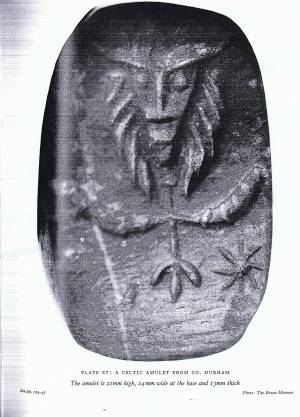 |
| Image 2 ID | 4317 Click image to enlarge |
| Image 2 Description | Stonehenge Viewpoint, Issue 50. Cover. |  |
| Image 3 ID | 4318 Click image to enlarge |
| Image 3 Description | Stonehenge Viewpoint, Issue 50. First Page | 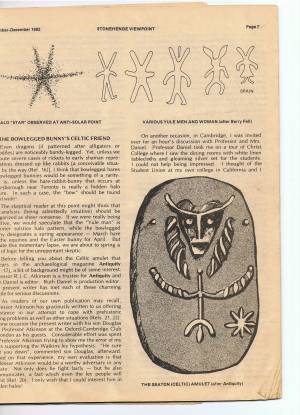 |
| Image 4 ID | 4320 Click image to enlarge |
| Image 4 Description | Stonehenge Viewpoint, Issue 50.Page 2 | 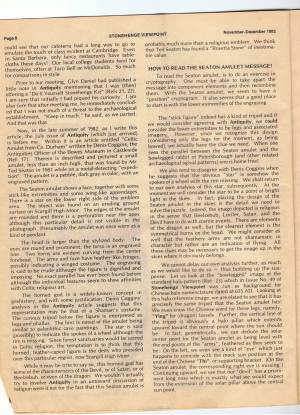 |
| Image 5 ID | 4321 Click image to enlarge |
| Image 5 Description | Stonehenge Viewpoint, Issue 50.Page 3 | 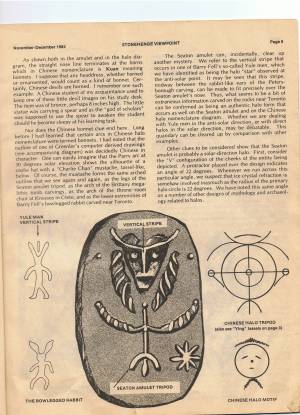 |
| Image 6 ID | 4322 Click image to enlarge |
| Image 6 Description | Stonehenge Viewpoint, Issue 50.Page 4 | 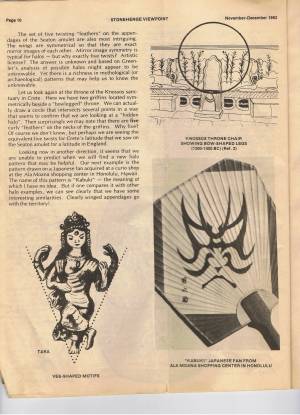 |
| Image 7 ID | 4323 Click image to enlarge |
| Image 7 Description | Stonehenge Viewpoint, Issue 50.Page 5 | 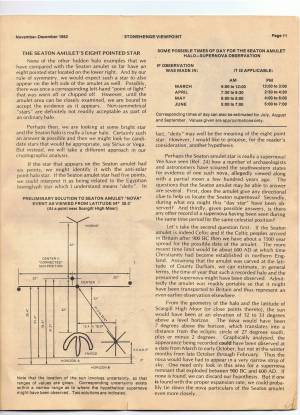 |
| Image 8 ID | 4324 Click image to enlarge |
| Image 8 Description | Stonehenge Viewpoint, Issue 50.Page 6 | 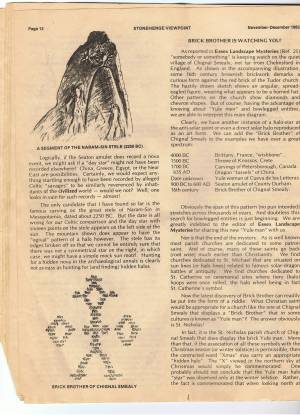 |
| Image 9 ID | 4325 Click image to enlarge |
| Image 9 Description | Stonehenge Viewpoint, Issue 50.Page 7 | 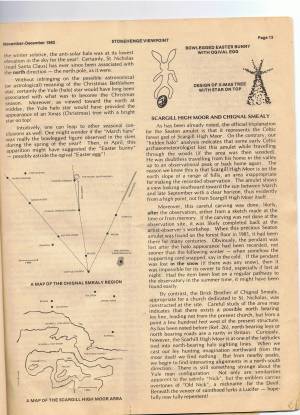 |
| Image 10 ID | 4326 Click image to enlarge |
| Image 10 Description | Stonehenge Viewpoint, Issue 50.Page 8 |  |